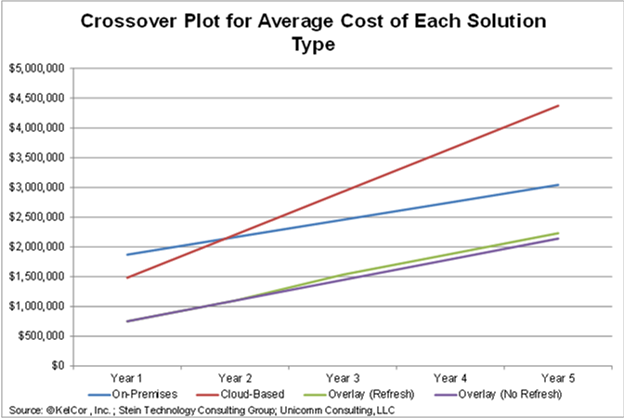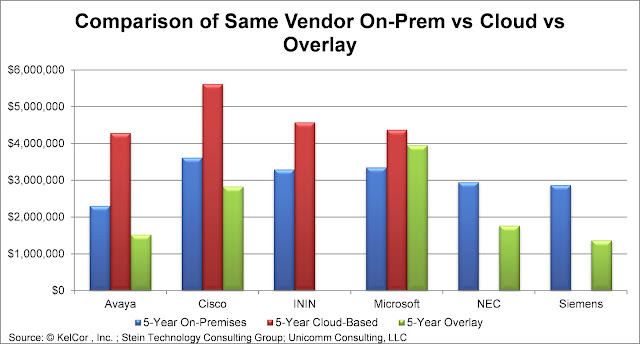A broad and possibly confusing range of options face enterprises and organizations of all sizes as they consider immediate and future communications and collaboration needs. One of the challenges organizations face is obtaining reliable cost data for UC and IP-PBX solutions and in being able to make apples-to-apples comparisons between them. Add the complexity of trying to compare on-premises to cloud to overlay deployment options, and the task of evaluating the numerous possibilities quickly becomes overwhelming.
To help make this task easier, sixteen vendors offering a total of 24 solutions have stepped up to respond to an RFP covering cloud, overlay, and on-premises options. The RFP was for 2,000 UC seats. The organization consisted of a headquarters location and two branch offices. There was a 75 person call center also included.
Based on the responses of the vendors themselves, and using only the public RFP data presented, the data has been compiled into a format that makes it easy to compare the TCO over a five-year period for all of these solutions. In addition to using the data as bid by each vendor, we have normalized the solutions so that a true apples-to-apples comparison can be made.
The following figure shows the average costs for the nine on-premises offerings, the seven hosted solutions, and the eight overlay systems. Actual costs ranged from $1.37 million for the lowest TCO offering up to $5.97 million for the most expensive solution over the five-year period covered in the RFP.
From this data, we see that there is a clear crossover point between on-premises and hosted solutions. Furthermore, the hosted offerings initially cost less, but almost universally turn out to cost more by the end of the five-year period. That being said, the hosted providers are also showing double-digit growth universally, so there is clearly more than just TCO at play when companies make these decisions. The overlay options almost always come out less expensive over the TCO period. We also note the concern as to whether an overlay solution will meet an organization’s long term needs, or if it will evolve into a complete IP PBX and UC solution with adjusted TCO at some future date.
It is interesting to look at the costs for vendors who bid multiple solution types. For example, Microsoft’s overlay option is more expensive that its on-premises offering while Avaya’s and Cisco’s on-premises solutions are less expensive from a TCO perspective than their hosted options but more expensive than their overlay solutions. The Cisco cloud-based solution represents Cisco Hosted Collaboration Solution (HCS) offered by Verizon; the Microsoft cloud-based solution represents Microsoft Lync hosted by BT.
An overview of the report containing the executive summary and the table of contents is available by clicking here. Alternatively, any of the authors may be contacted. Because this information is so relevant for end user organizations investigating UC solutions, pricing for these organizations has been made very attractive. We know of no other document with such comprehensive TCO data available in our market.
The original RFP used for this study may be obtained by contacting the author.





